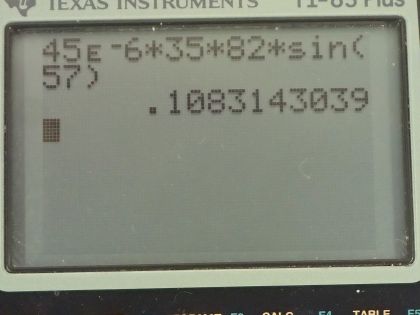Question
An airplane wingspan can be approximated as a conducting rod of length 35 m. As the airplane flies due north, it is flying at a rate of 82 m/s through the Earth’s magnetic field, which has a magnitude of toward the north in a direction below the horizontal plane. (a) Which end of the wingspan is positively charged, the east or west end? Explain. (b) What is the Hall emf along the wingspan?
Final Answer
- West
Solution video
OpenStax College Physics for AP® Courses, Chapter 22, Problem 10 (Test Prep for AP® Courses)

vote with a rating of
votes with an average rating of
.
Calculator Screenshots
Video Transcript
This is College Physics Answers with Shaun Dychko. We imagine that the wing of an airplane is like a conducting rod and the airplane wing has a length of 35 meters the airplane is flying due north with a speed of 82 meters per second and the question is which wing tip— the east wing tip or the west wing tip— will be positive as a result of the emf that's created by this rod traveling through the Earth's magnetic field? If we take a side view of this picture, we have the field going down into the right at an angle of 57 degrees below the direction of velocity or 57 degrees below the horizontal plane. Okay! The magnitude of the magnetic field is 45 microtesla and we use the right-hand rule to answer question (a) which end of the wingspan is positively charged? We put our thumb in the direction of the velocity, which is straight up the page our fingers will point down in the direction of the magnetic field and our palm will be in the direction of force that a positive charge would experience. So a positive charge would be forced towards this end over here and of course the positive charges aren't going to move but the negative charges will and they will be moved to this end. Okay and the lack of electrons on this end will result in a positive charge at this western tip. Okay! So there we go! Part (b) asks what is the emf and it's going to equal the magnetic field strength times the length of the wing times its speed multiplied by sin of the angle between the velocity and the magnetic field. So that's 45 times 10 to the minus 6 tesla— magnetic field strength— times 35 meters—wing length— times 82 meters per second—speed— times sin 57 degrees and that is 0.11 volts.
